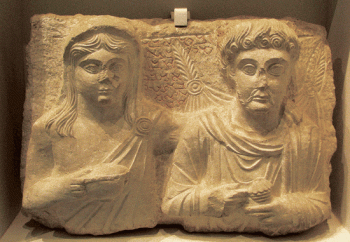American Journal of Archaeology | The Journal of the Archaeological Institute of America
You are here
Gesture and Identity in the Funerary Art of Palmyra
October 2010 (114.4)
Gesture and Identity in the Funerary Art of Palmyra
The funerary art from Palmyra, a city in the eastern Roman empire, offers us a glimpse into the creation of social identity in the aftermath of Roman conquest. The Palmyrene portraits are modeled on the Roman funerary relief but with interesting local variations. For example, the deceased in these portraits hold their hands in a number of different positions. An analysis of these gestures reveals that some highlight certain aspects of the individuals represented, such as gender, profession, and family connections. The emphasis on these characteristics shows the multifaceted ways in which they defined themselves, and moves us beyond interpretations of identity that focus on a dichotomy between local and Roman.
Gesture and Identity in the Funerary Art of Palmyra
By Maura K. Heyn
American Journal of Archaeology Vol. 114, No. 4 (October 2010), pp. 631–661
DOI: 10.3764/aja.114.4.631
© 2010 Archaeological Institute of America


